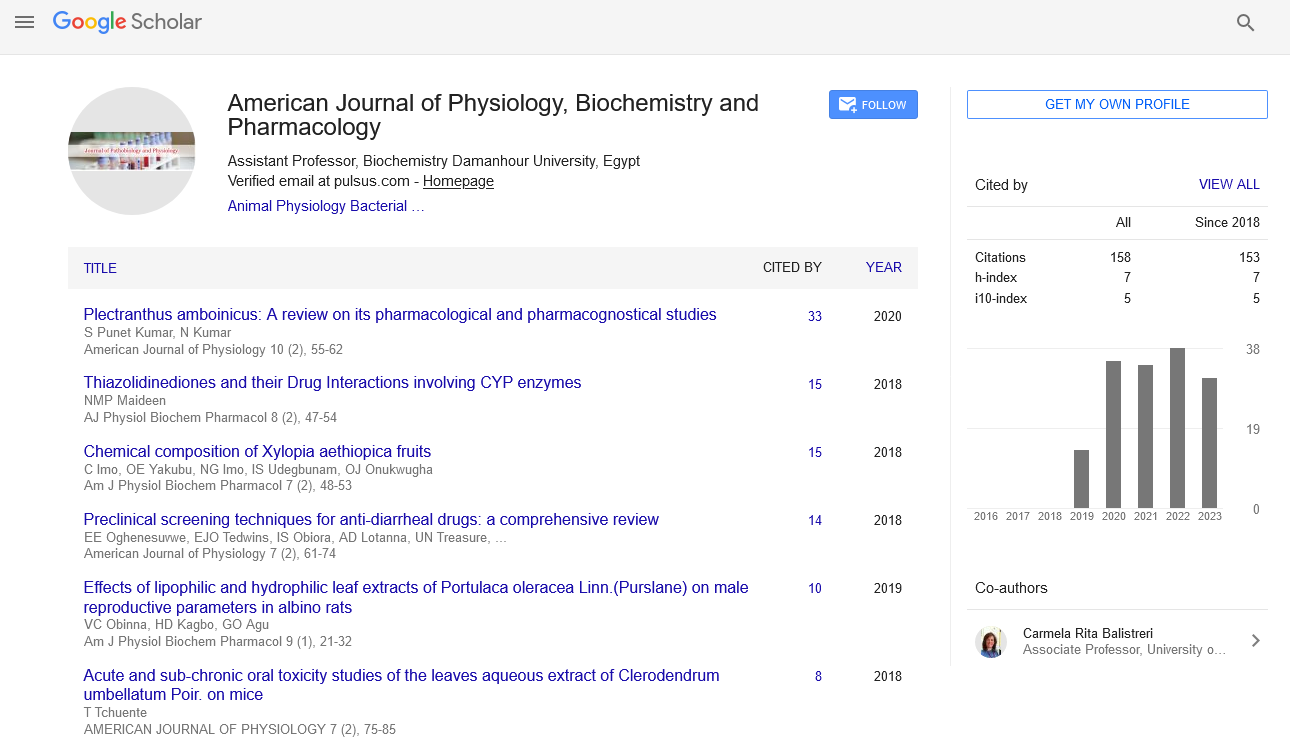Perspective - American Journal of Physiology, Biochemistry and Pharmacology (2022)
Structure and Function of Nervous System
Scott R James*Scott R James, Department of Biochemistry, University of Texas Health Science Center, Texas, USA, Email: jamesscott@kumc.edu
Received: 01-Feb-2022, Manuscript No. AJPBP-22-53761; Editor assigned: 03-Feb-2022, Pre QC No. AJPBP-22-53761 (PQ); Reviewed: 17-Feb-2022, QC No. AJPBP-22-53761; Revised: 22-Feb-2022, Manuscript No. AJPBP-22-53761 (R); Published: 01-Mar-2022
Introduction
Sensory input, integration, and neural pathways are the three overarching functions of the nervous system, which is a complex network of nerves and cells. Even at the most fundamental level of the nervous system, this procedure is generally the same. Sensing the surroundings and changes in an organism is carried out by sensory organs such as the eyes, ears, nose, tongue, and skin, some of which are active at the same time.
Glial cells provide support and maintenance for neuronal cells, while neuronal cells are responsible for signal transmission. Nerves are frequently formed by end-to-end connections between neurons, which are supported by glial cells. The Peripheral Nervous System is made up of nerves that transfer sensory and motor information between the central nervous system and the remainder of the body (PNS). Sensory organs have receptor cells that receive sensory input. Light receptor cells, for example, are found in the eyes, and chemical receptor cells are found on the tongue’s surface.
Signals from these receptors travel through sensory neurons in the peripheral nervous system tothe central nervous system, where they are processed before being conperipheral nervous system. Chemical and electrical signals are used to communicate between receptor cells and effector cells. Because information is communicated across several cells, special chemicals called neurotransmitters or a particular type of an electrical signal called an action potential are used.
The nervous system’s functional unit is the neuron. A neuron is made up of three major components: a nucleus- containing cell body, dendrites that receive signals, and a lengthy axon that transmits the signal to the next cell. Neurons vary in length based on their location. Neurons in the central nervous system may be only a few millimetres long, but neurons in the peripheral nervous system might be over a metre long. There are approximately two billion neurons in a normal human body, with one billion in the brain and another billion in the rest of the body. Glial cells are supporting cells that help neurons perform their activities by providing structural and functional support. The synaptic terminal is the end of a neuron that connects to another neuron to continue the communication process or to a muscle to stimulate muscle movement. Glial cells outnumber neurons by a factor of 10 to 50.
The central nervous system and the peripheral nervous system are the two sections of the nervous system. The central nervous system is made up of the brain and spinal cord. The Forebrain, Midbrain, and Hindbrain are the three sections of the brain. The telencephalon, which consists of the cerebrum or cerebral hemispheres and contains cerebral cortex, white matter, and basal nuclei, and the diencephalon, which consists of the thalamus, hypothalamus, and epithalamus, develops into two halves. The midbrain develops into a component of the brainstem after passing through the mesencephalon. The metencephalon and myelencephalon are two regions of the hindbrain that develop. The pons (a portion of the brainstem) and cerebellum develop from the metencephalon. The medulla oblongata, which is also part of the brain stem, is where the myelencephalon originates.
Copyright: © 2022 The Authors. This is an open access article under the terms of the Creative Commons Attribution NonCommercial ShareAlike 4.0 (https://creativecommons.org/licenses/by-nc-sa/4.0/). This is an open access article distributed under the terms of the Creative Commons Attribution License, which permits unrestricted use, distribution, and reproduction in any medium, provided the original work is properly cited.






